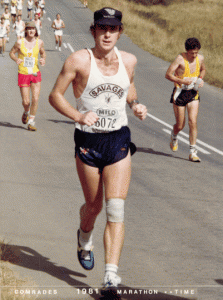The History of Aqualyte Electrolyte Rehydration
Dr Graham Bates, a Medical Physiologist developed Aqualyte Hypotonic whilst working as an academic. His research interest was fluid and electrolyte balance for people working and exercising in the heat.
 At the beginning of his 25 years of academic research in the subject, his interest in hydration and thermoregulation started in 1981 whilst running the Comrades 90km marathon in South Africa. He was handed a cola drink at the 65km mark as a fluid replacement drink, which started him thinking “what is in sweat, as surely that’s what I should be replacing?” “How much water should you drink a day?” At that time, very little research had been conducted into the composition of sweat and so started a strand of his research themes.
At the beginning of his 25 years of academic research in the subject, his interest in hydration and thermoregulation started in 1981 whilst running the Comrades 90km marathon in South Africa. He was handed a cola drink at the 65km mark as a fluid replacement drink, which started him thinking “what is in sweat, as surely that’s what I should be replacing?” “How much water should you drink a day?” At that time, very little research had been conducted into the composition of sweat and so started a strand of his research themes.
At the same time, Dr Bates was consulting to major underground mining companies in Occupational Health and Safety on issues relating to the relationship between dehydration, heat illness and workers performance – well in advance of the focus on such issues within the sports environment we now more commonly think of.
Aqualyte hypotonic electrolyte was born
During this work, the same question kept being asked, what should workers in hot, hostile, demanding environments, who can lose up to 8 litres of sweat per day be drinking? Existing products on the market were either too high in sugar or did not match the fluid and electrolyte composition known to be lost in sweat.
After unsuccessfully trying to convince existing companies to manufacture an electrolyte drink scientifically formulated to replace sweat and optimise rehydration absorption rates, Dr Bates decided to make it himself. From this, Aqualyte hypotonic electrolyte was born.

